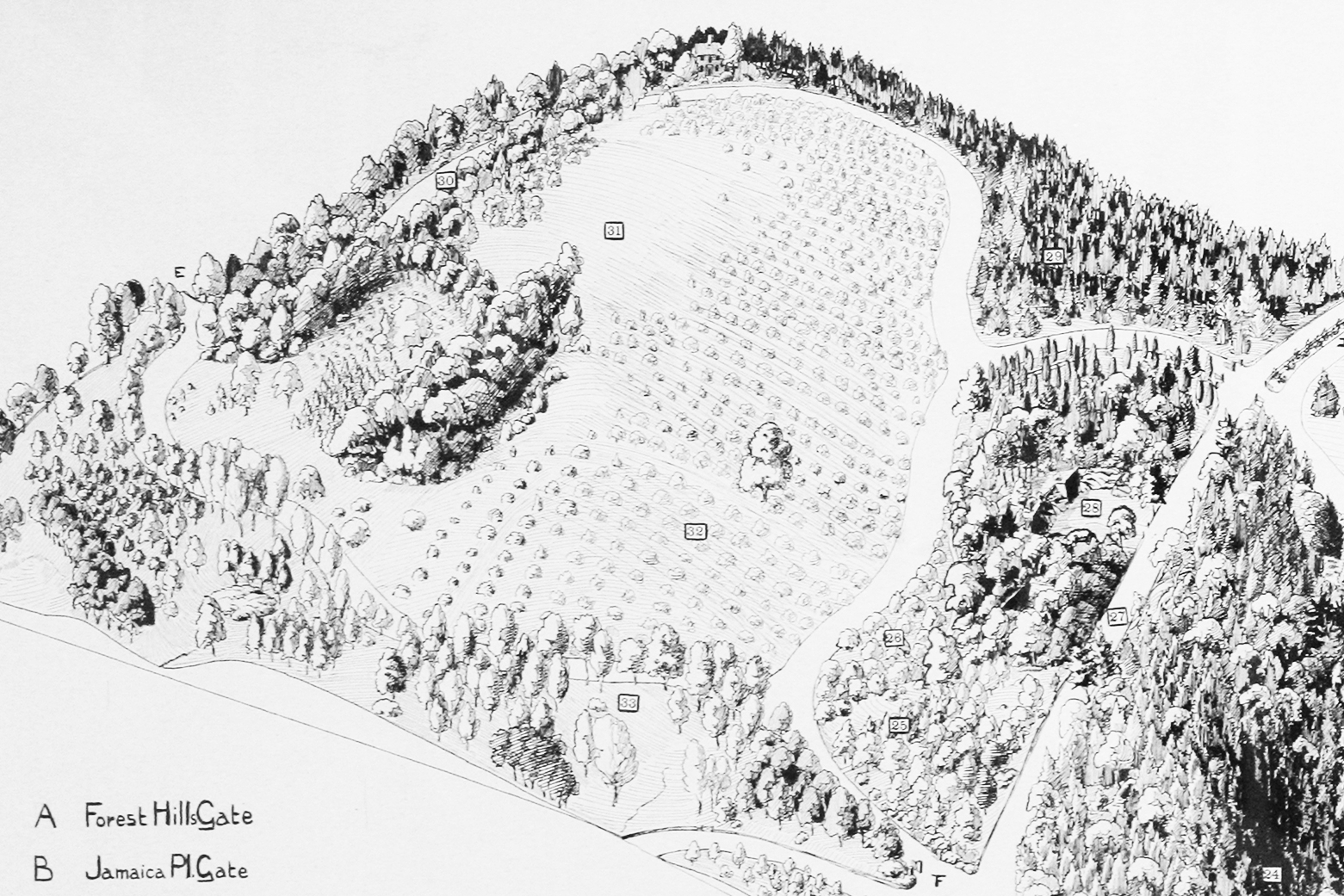Please don’t ask me to identify a hawthorn—or rather to distinguish one from another. As a bookwormish horticulture student, memorizing leaf shapes and bud characteristics for plant identification exams, I learned only the basics. In a house yard in the Midwest, I would feel confident saying that a hawthorn with layered horizontal branches and tear-shaped leaves (the narrowest portion attached to the branch) was a cockspur hawthorn (Crataegus crus-galli), a classic of home gardens and university campuses. If the leaves were shaped like coarsely hewn diamonds and the plant itself had a more open form—the bright red fruit persisting well after the leaves had fallen—I would feel secure proposing that not only was the tree a green hawthorn (C. viridis) but it was the cultivar ‘Winter King’—a stunning selection, also notable for producing fewer of the namesake thorns. I would gamely stab at naming several other species, like downy hawthorn (C. mollis) or Washington hawthorn (C. phaenopyrum), but the determination would be noncommittal, couched with caveats.

To walk into the Arnold Arboretum’s hawthorn collection on Peters Hill over the next week or two, as the white flowers alight on the branches, is another thing altogether. Making sense of hawthorn diversity would require an exceptional dichotomous key, something like the one taxonomist James Phipps prepared for the Flora of North America, which provides step-by-step guidance for identifying 169 species and 17 hybrids. (Phipps counted around 230 hawthorn species globally, and the Arboretum collection has more than 60 species—not counting varieties—and 6 hybrids.) I gave the Flora of North America key a try on my phone, while standing in the collection on a recent spring morning, but for non-taxonomist, even for someone with a component familiarity with botanical lingo, the steps require a good glossary (for terms like falcate bracteole, which you need to assess, on the tree, almost immediately). To proceed past the third step, however, requires fruit characteristics. Phipps notes this conundrum, encouraging “users of this text” to return to the same tree in both spring and fall. I poked around—guessing at the future fruit color and seed shape—all to no avail.
Charles Sprague Sargent, the founding director of the Arnold Arboretum, fell deeply into the taxonomic spell of the hawthorns, attempting to untangle the mess. One of the earliest hawthorns to flower along Peters Hill Road, Crataegus amnicola (accession 6328*A), was sent to Sargent by his longtime field collaborator Thomas Grant Harbison, who collected seed near Chattanooga, Tennessee. Nearby a cockspur hawthorn (C. crus-galli var. crus-galli, accession 6355*A) leans on a low, horizontal trunk, poised to flower soon. It was collected by the general store owner and field botanist Benjamin Franklin Bush, in the southwestern corner of Missouri. Further down the road, one my favorite hawthorns is a hybrid (C. × disperma, accession 4422*A), collected by Virginius Chase, a telegraph operator in the now-nonexistent town of Wady Petra, Illinois, situated northwest of Peoria. When I observed the plant recently, the buds were loose wads of white petals, hovering above the glossy leaves—the full bloom imminent.
Sargent ultimately assembled an orchard of hawthorns that covered the whole northern slope of Peters Hill, propagated from seeds sent by a wide network of collectors across eastern North America. The centenarians on the eastern edge are now the primary remnants. Along the way, Sargent named more than seven hundred kinds of hawthorns—not just species but also varieties and hybrids. Other botanists, including Ernest Jesse Palmer, at the Arnold Arboretum, would consolidate those names, but the taxonomic inscrutability would scarcely abate. In a 2005 article, subtitled “Another Look at the ‘Crataegus Problem’”, Phipps noted that the difficulty of placing a name on hawthorns was not unique to the uninitiated. “Problems with Crataegus identification render much of Crataegus taxonomically almost intractable for many workers,” he wrote, “including otherwise excellent systematists whose main interests lie elsewhere.” Phipps explained that while his research suggested relatively low occurrence of hybridization between hawthorn species in different sections or series (you might think of them as cousins), certain species were evidently undergoing “vigorous raciation” and potentially hybridizing with closely related species (a relationship that, for lack of a better analogy, would be more like siblings). Moreover, taxonomists have long noted the occurrence of asexual seed production in hawthorns, a phenomenon known as apomixis, which further complicates matters.

Yet to simply stand in the hawthorn collection on Peters Hill, when the trees are covered with flowers, I understand the enrapturement that might have been a subtle fuel for Sargent’s taxonomic quest. Flowering hawthorns—point blank—are beautiful. Never mind the thorns, I would plant one almost anywhere, even though foliar diseases often cause the leaves to drop early. In the first volume of Marcel Proust’s opus, In Search of Lost Time, the narrator writes repeatedly of this allure—the experience of smelling hawthorns in a hedge, outside the small French town where his aunt lived, and of seeing them collected for an altar bouquet in the town church. “I remained there in front of the hawthorns, breathing in…and finding again their invisible and unchanging smell, absorbing myself in the rhythm that tossed their flowers here and there with youthful high spirits,” the narrator states (via the Lydia Davis translation). “They offered to me the same charm endlessly…like the melodies you replay a hundred times in succession without descending further into their secrets.” Unlike flowers of the common lilac (Syringa vulgaris), which Proust also writes about, hawthorns are not sweet to the nose. A certain muskiness dominates—a fragrance that at first sniff seems unpleasant but then, inhaling deeper, becomes irresistible. If I were a taxonomist, I wouldn’t mind returning again and again.
